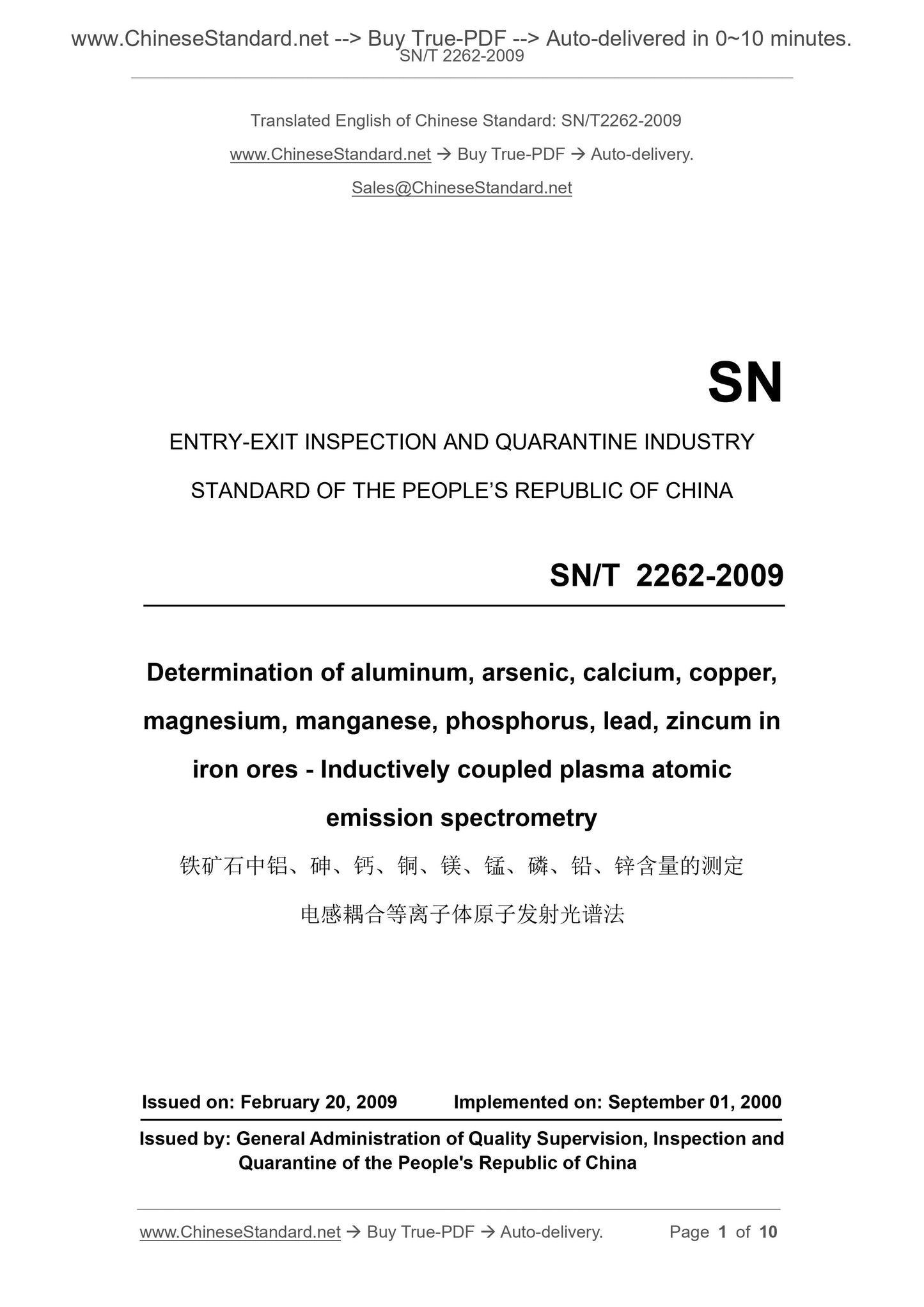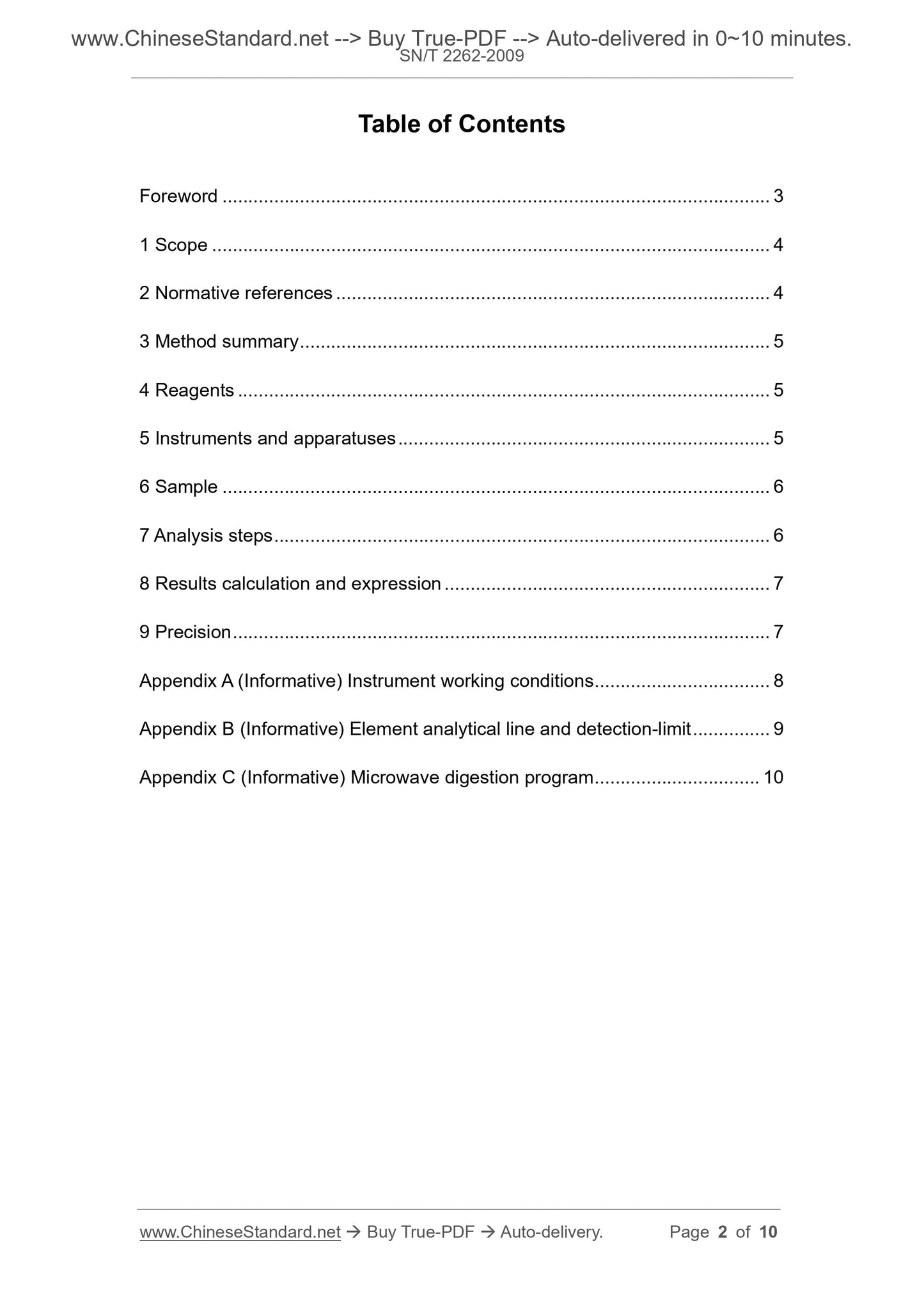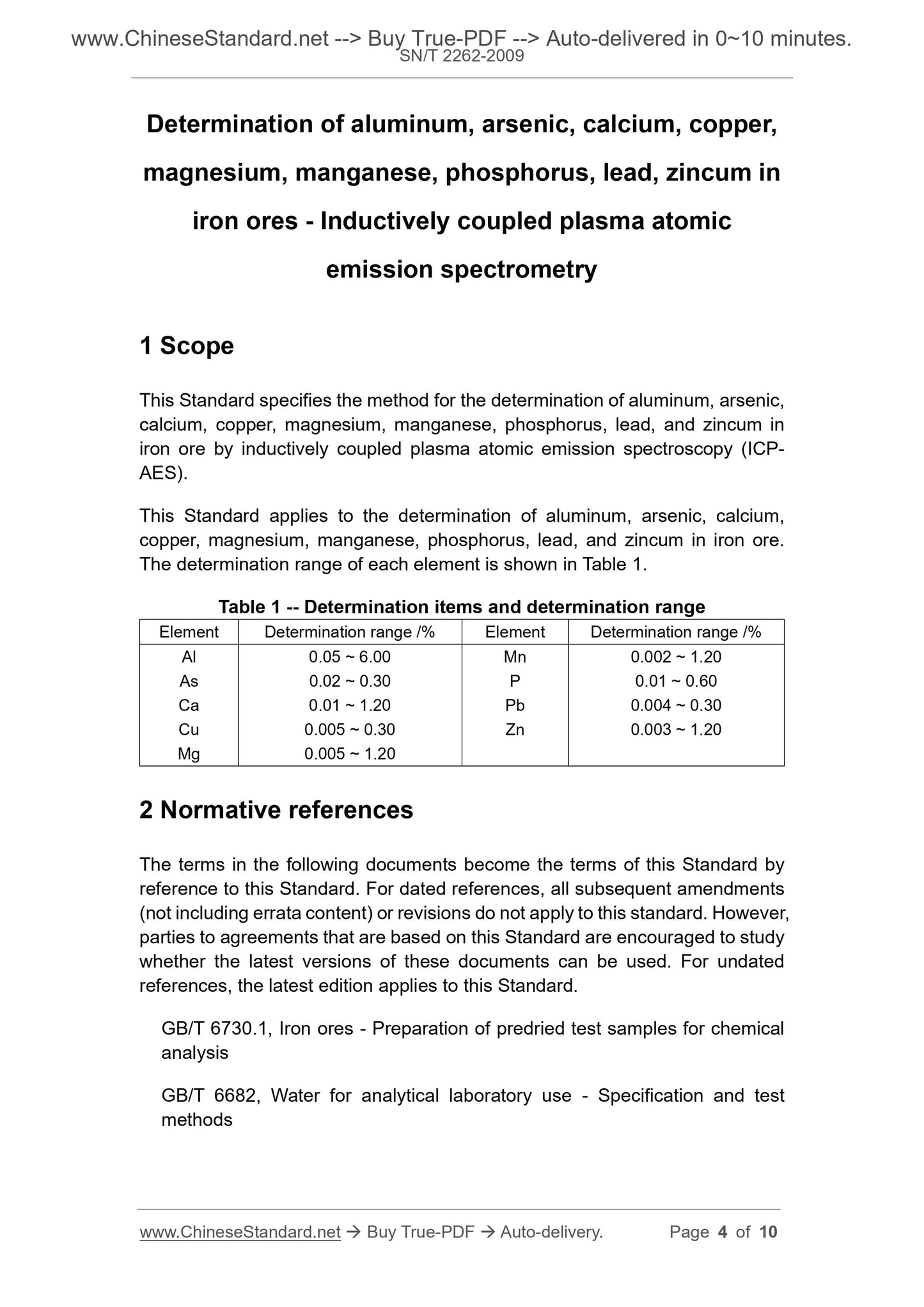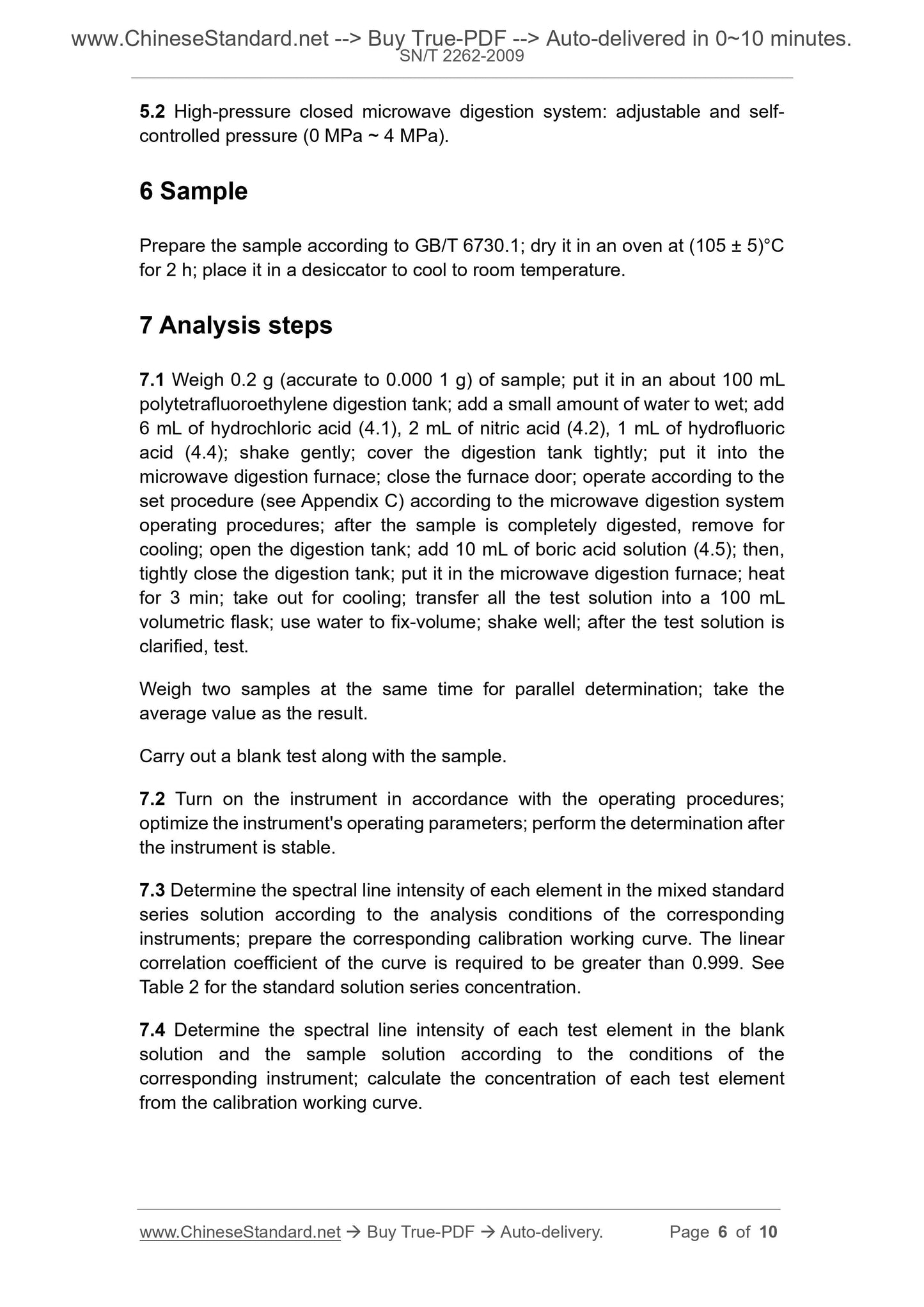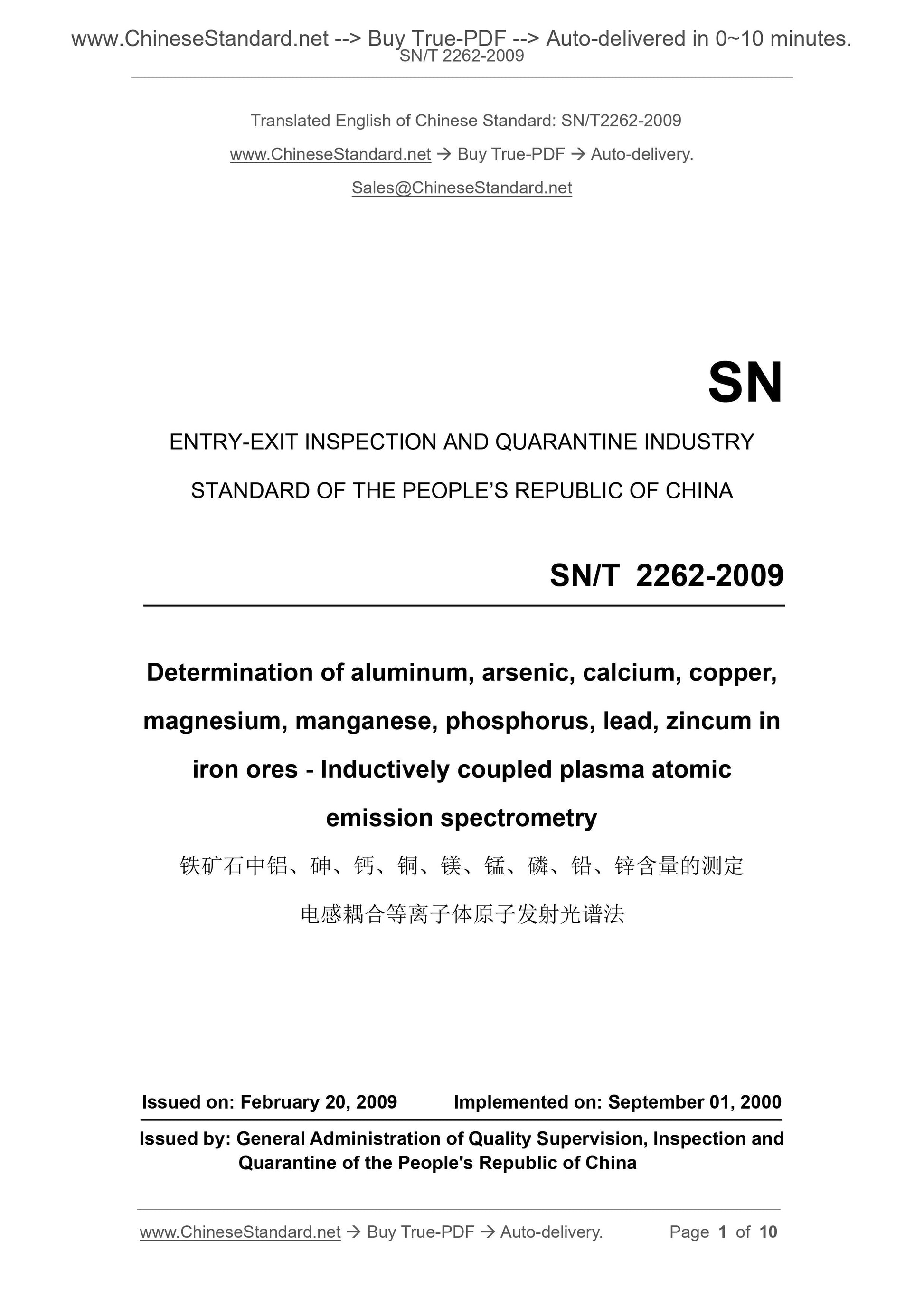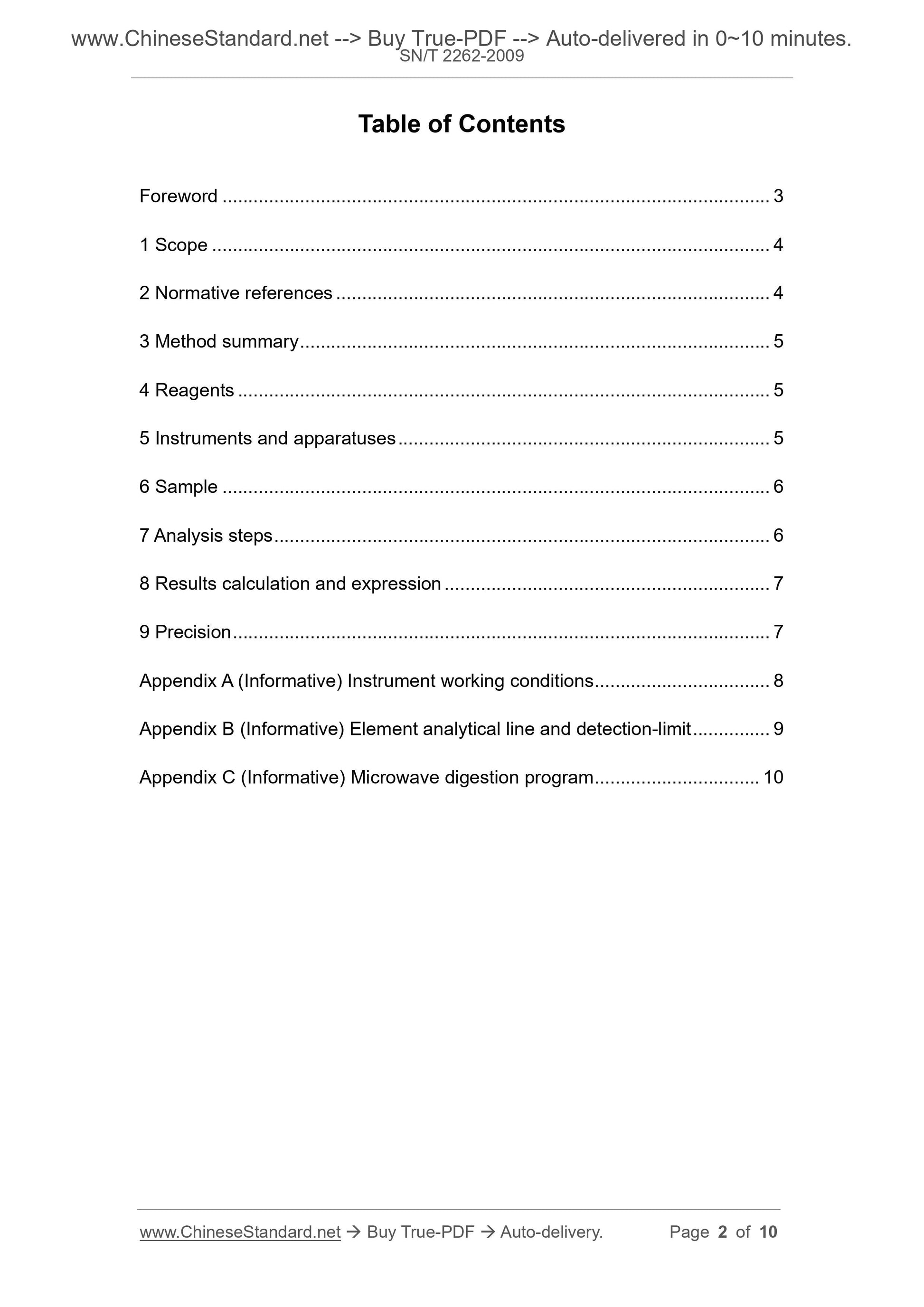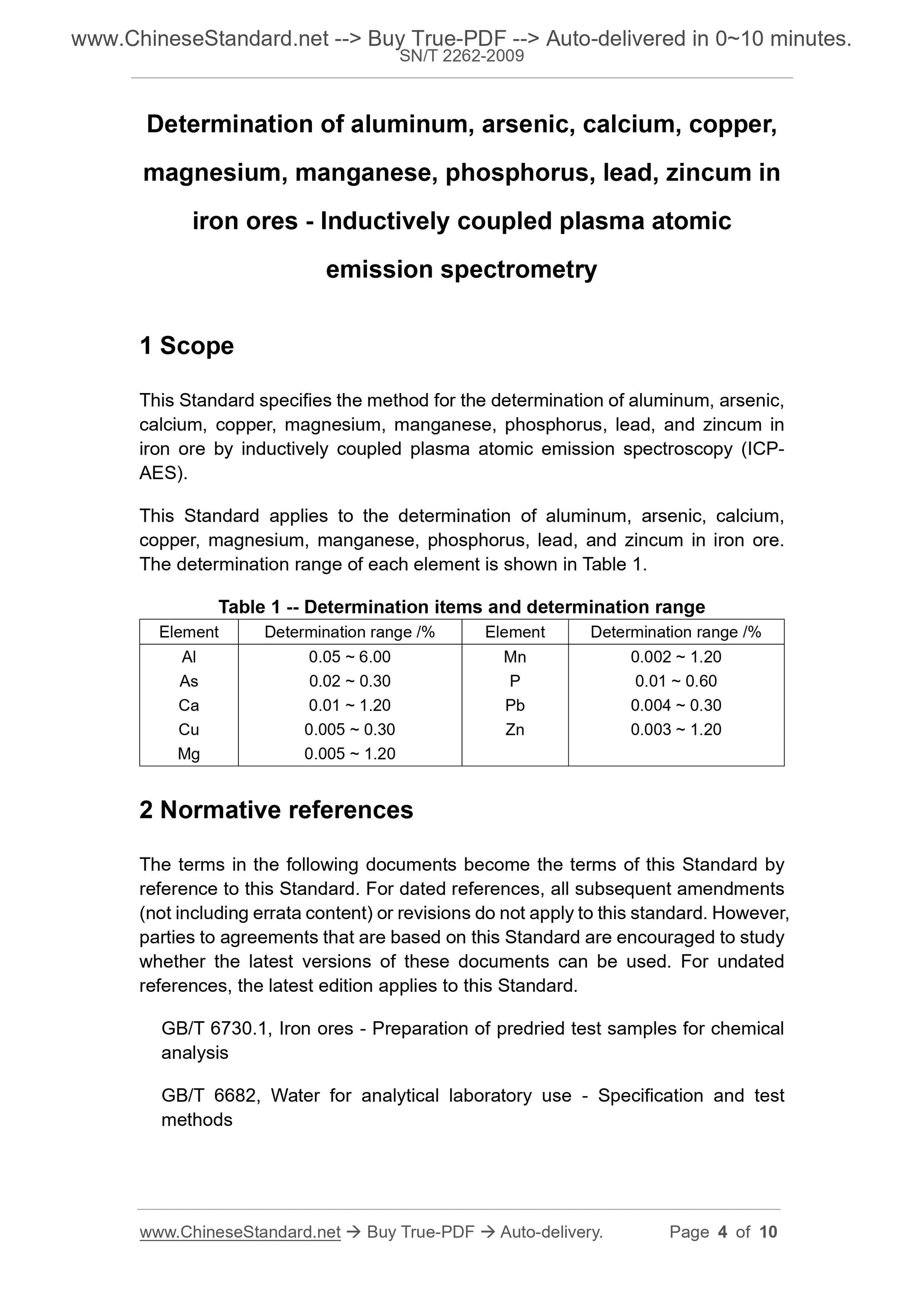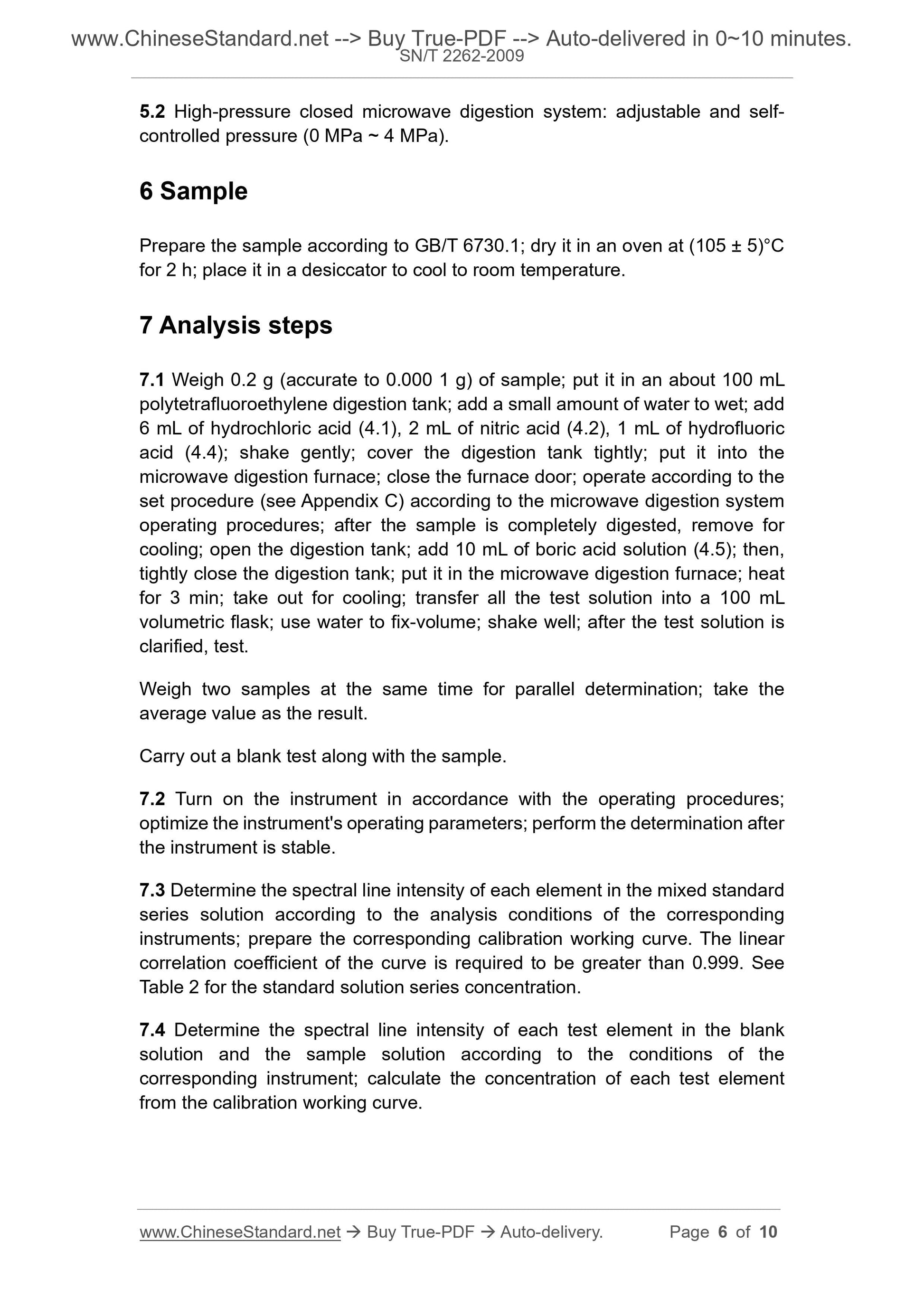1
/
of
4
www.ChineseStandard.us -- Field Test Asia Pte. Ltd.
SN/T 2262-2009 English PDF (SN/T2262-2009)
SN/T 2262-2009 English PDF (SN/T2262-2009)
Regular price
$165.00
Regular price
Sale price
$165.00
Unit price
/
per
Shipping calculated at checkout.
Couldn't load pickup availability
SN/T 2262-2009: Determination of aluminum, arsenic, calcium, copper, magnesium, manganese, phosphorus, lead, zincum in iron ores - Inductively coupled plasma atomic emission spectrometry
Delivery: 9 seconds. Download (and Email) true-PDF + Invoice.Get Quotation: Click SN/T 2262-2009 (Self-service in 1-minute)
Newer / historical versions: SN/T 2262-2009
Preview True-PDF
Scope
This Standard specifies the method for the determination of aluminum, arsenic,calcium, copper, magnesium, manganese, phosphorus, lead, and zincum in
iron ore by inductively coupled plasma atomic emission spectroscopy (ICP-
AES).
This Standard applies to the determination of aluminum, arsenic, calcium,
copper, magnesium, manganese, phosphorus, lead, and zincum in iron ore.
The determination range of each element is shown in Table 1.
Table 1 -- Determination items and determination range
Element Determination range /% Element Determination range /%
Al 0.05 ~ 6.00 Mn 0.002 ~ 1.20
As 0.02 ~ 0.30 P 0.01 ~ 0.60
Ca 0.01 ~ 1.20 Pb 0.004 ~ 0.30
Cu 0.005 ~ 0.30 Zn 0.003 ~ 1.20
Mg 0.005 ~ 1.20
Basic Data
| Standard ID | SN/T 2262-2009 (SN/T2262-2009) |
| Description (Translated English) | Determination of aluminum, arsenic, calcium, copper, magnesium, manganese, phosphorus, lead, zincum in iron ores - Inductively coupled plasma atomic emission spectrometry |
| Sector / Industry | Commodity Inspection Standard (Recommended) |
| Classification of Chinese Standard | D31 |
| Classification of International Standard | 73.060.10 |
| Word Count Estimation | 8,811 |
| Date of Issue | 2009-02-20 |
| Date of Implementation | 2009-09-01 |
| Quoted Standard | GB/T 6730.1; GB/T 6682 |
| Regulation (derived from) | National Quality Inspection [2009] No. 67 |
| Issuing agency(ies) | General Administration of Customs |
| Summary | This standard specifies the inductively coupled plasma atomic emission spectrometry (ICP-AES) Determination of iron in aluminum, arsenic, calcium, copper, magnesium, manganese, phosphorus, lead, zinc content approach. This standard applies to iron ore of aluminum, arsenic, calcium, copper, magnesium, manganese, phosphorus, lead and zinc content of each element of the measuring range in Table 1. |
Share
